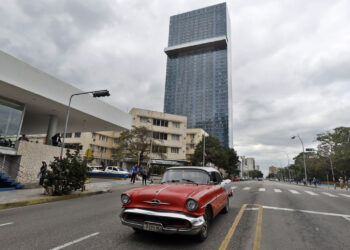The 2012-2013 harvest that ended recently reached only 89 percent of expected sugar production, according to the president of Azcuba, Orlando Celso Garcia. These figures mean, however, 15.6 percent increase from the previous harvest. Among the causes for not achieving the plan weighed the lack of raw materials and poor industrial performance in some factories. It was pointed the lack of efficiency of previous repairs. However authorities attributed these results to “subjective factors”: technical and business discipline. The truth is that they were short 192 000 tons of sugar and only three provinces met their production plans: Sancti Spiritus, Ciego de Avila and Artemisa (19 sugar mills). However, the sugar that came out this year from factories exceeded standard quality parameters and could be marketed in better condition.
● ● ● ● ● ● ● ●● ● ● ●
The Seventh Congress of the National Association of Economists and Accountants of Cuba (ANEC) concluded in Havana. The new National Executive Council to lead this professional association of more than 80 000 members over the next five years is headed by Danilo Guzman Dovao, as president and first vice president Osvaldo Villalobos Villarejo. Comptroller Dovao Guzmán has been head of the Havana province. In his opening speech he said that “working links between ANEC and the Permanent Commission for Implementation and Development of the Guidelines are an expression of the close communication that exists today between government structures directly involved in the transformation of the economy and Cuban economic thinking prevalent in civil society.”During the opening session of the Congress vice President of the Council of Ministers and Head of the Standing Commission for Implementation of the Guidelines, Marino Murillo, confirmed the policy of” eliminating all that slow the development of productive forces, “and claimed that the Cuban economy still has large reserves of efficiency.
● ● ● ● ● ● ● ●● ● ● ●
More than 300 wildfires have occurred in Cuba from January to May this year, the Cuba Ranger Corps announced this week. These incidents caused losses equivalent to about 14 million dollars and wiped out 3800 hectares, slightly less than reported during the same period in 2012. Fourteen people, mainly farmers were found guilty of negligence and bad practices that ended in the destruction of some 558 hectares.
● ● ● ● ● ● ● ●● ● ● ●
“The 40 000 Cuban health collaborators working in 60 countries have become the main source of income for Cuba. They bring about U $ D 5 billion a year, far exceeding tourism, remittances and nickel.” Thus begins the post “La salud, locomotora de la economía cubana” (Health: locomotive of the Cuban economy), released this June 7 by the BBC correspondent in Cuba, Fernando Ravsberg. The number of collaborators includes 15 thousand doctors, 2300ophthalmologists, 15 000 graduates, 5000 health technicians and 800service personnel, according to the Foreign Ministry. After 1959, Cuba was left with about 3,000 physicians. Today it has 75 000 doctors, one for every 160 inhabitants, which gives it the opportunity to export professional services in this area, on five continents.
● ● ● ● ● ● ● ●● ● ● ●
The newspaper El Nuevo Herald reported an analysis of the agency The Havana Consulting Group, based in Miami, called “Remittances to Cuba: the most powerful engine of the Cuban economy,” according to which the end 2012 remittances to Cuba totaled $ 2.605 billion, according to the authors represents an increase of over 13 percent compared to the previous year. “Today remittances to the island arrive at 62 percent of Cuban households, support almost 90 percent of the retail market and allow them to provide employment to tens of thousands of people,” said the study, according to El Nuevo Herald.












